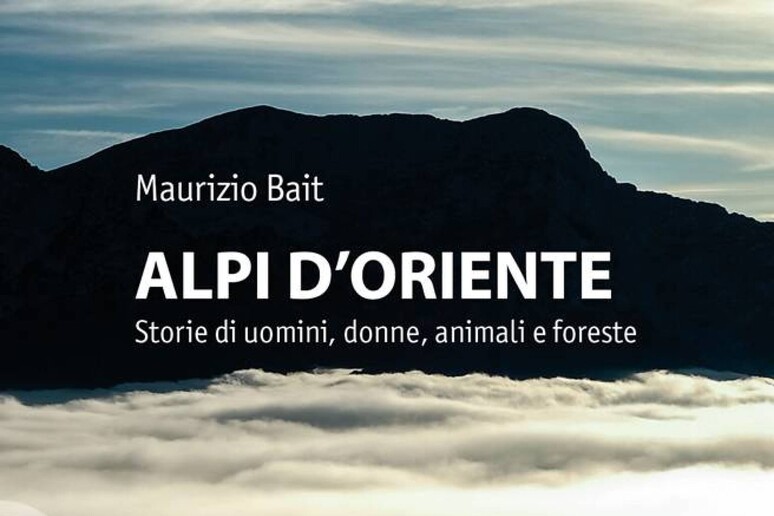(di Francesco De Filippo)
MAURIZIO BAIT, "EASTERN ALPS.
STORIES OF MEN, WOMEN, ANIMALS AND FORESTS" (ediclo publisher;
189 pp.; 16 euros) The Way of Songs, The Way of Resonances,
The Ways of Bear Mauro and even The Ways of War in Paradise:
there is not just one way up to the summit, and in any case, in
addition to those already open, "everyone finds his own way" and
"the Mountain will reward him with a thousand secret treasures."
It is true for the "Eastern Alps," as writer and journalist
Maurizio Bait titled his latest book, pointing to that area in
Friuli that stretches between Valbruna, Valsaisera, Montasio,
Alta Spragna, and Jof Fuart. But it is not a truth confined to
this geographical area: "Do not look for climbing scaffolding in
the mountain, but look for its soul," was the thought of poet,
writer and mountaineer Julius Kugy (1858-1944). A hard and pure
Kugy, half-Austrian and half-Slovene, who named Franz Schubert
his own "personal saint": for him and his direct heir Vladimir
Dougan, planting nails and chains-"hardware"-in the rock was
blasphemous, Bait recalls. Generalized truth not only
geographical but also intimate: climbing to the summit
understood as a spiritual path, leading to inner peace. A
mountain enthusiast, a connoisseur of Italian, Germanic and
Slovenian culture, Bait in a "religious" book, pervaded by forms
of panism, rattles off a sort of Spoon River of the Julian Alps
with dozens of stories and faces known or known only in the
harsh world of mountaineering, with frequent and learned
historical, cultural, scientific diversions. In the triangle of
land between Italy, Austria and Slovenia, the references to the
psychoanalysis of Jung and one of his famous patients, Herman
Hesse, are strong, no less those of more distant figures such as
Heraclitus, Heisenberg, Roth. Bait loads the reader on his
shoulders and escorts him through the rigors of frost and the
suffering of World War I, which here claimed the lives of
hundreds of thousands of young men; he takes him to truly stormy
peaks and back in time to the dawn of mountaineering, when
natives went to high lands as poachers and not-as years later-
for challenge or sport, with technical clothing but out of need,
out of hunger, in the hope of hunting a chamois, which meant
meat for days and for the whole family. Then, when
mountaineering became popular, wealthy Austrians and people from
Trieste began to arrive who wanted to carve their names as the
first to reach the summit of Montasio, for example. Then the
natives stopped hunting to be guides, taking foreigners all the
way up pretending that no one had gone that high. At the summit
they would build a cairn with stones as was the custom, leaving
a case with the mountaineer's name as a testament to the
supremacy, and descend again. When the rich people left again,
they would climb back up, dismount and erase the trail waiting
for the next tourist who would attempt the feat of climbing the
summit first and thus another cairn of stones and new pouch.
Bait teaches the reader to recognize larch trees, which live to
be eight thousand years old, the philosophy of the lof pack, the
wolf, and unfamiliar countries with mysteriously Aztec, Mexican
sounds like Chiutzuquin and Mincigos. Walking through the woods
at night with a dim acetylene lamp illuminating no more than a
meter, Bait recognizes noises, noises, smells, describes almost
mythological figures of wolf-men, bear-men. "One evening a few
decades ago," he recalls, "while in a secluded hut I was sharing
a frugal dinner with a friend while a blizzard was raging
outside, the door swung open and a man dressed completely in
black, with a black cap and a sort of blunderbuss entered: in a
very narrow Friulian dialect he asked for polenta, cheese and a
bottle of wine. We gave him everything, he took it and
disappeared back into the blizzard."
ALL RIGHTS RESERVED © Copyright ANSA





